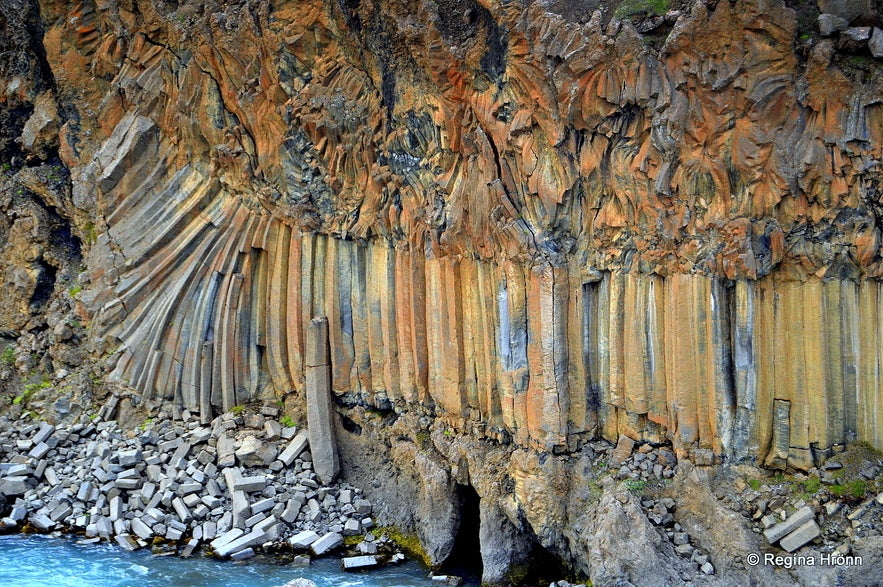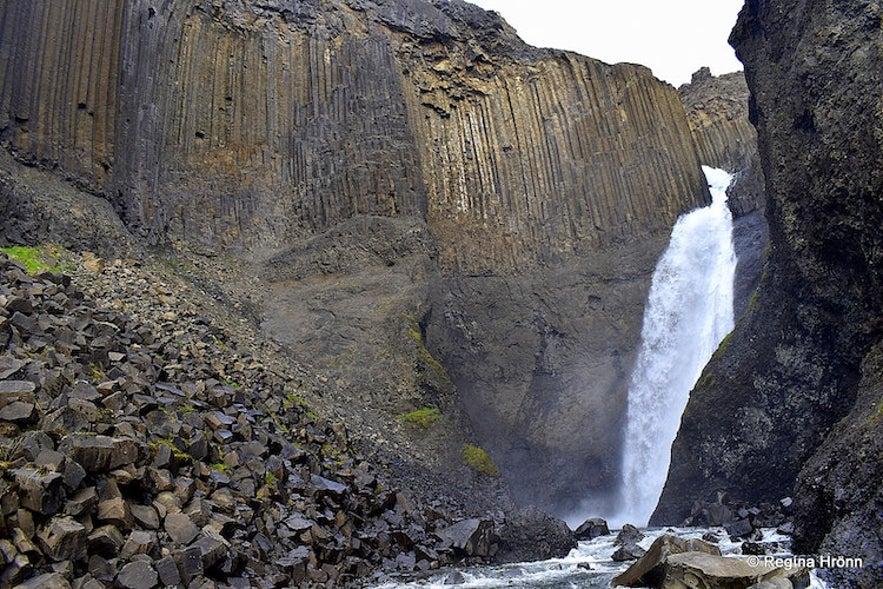
Basalt Columns of Iceland - Hexagonal Rocks of Wonder

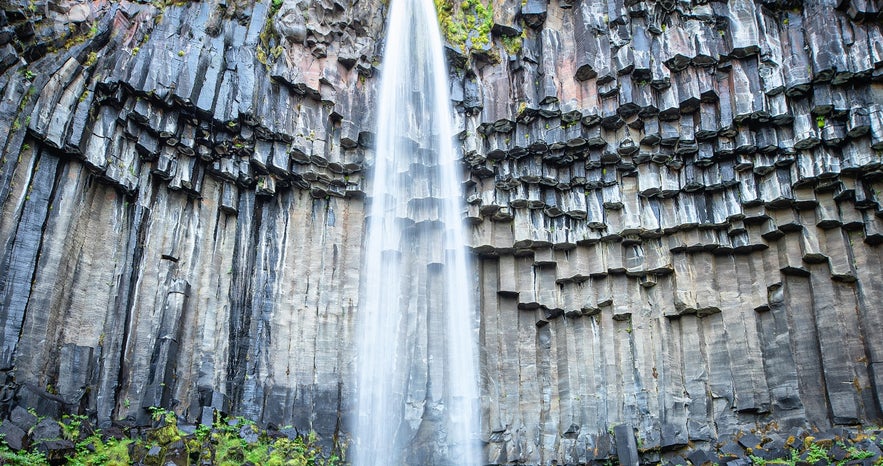
Iceland is home to a natural wonder that captures the imagination - basalt columns. These rock formations, with their unique hexagonal shapes, are sculpted by natural forces that can create stunning natural formations that rival the work of the world's finest architects.
Renting a car and driving around Iceland is a great way to see the basalt columns and the other geological wonders the country has to offer. Taking a self-drive tour of the country can show you just how diverse the landscapes can be, and you might even see iconic structures based on these unique natural formations from your accommodation in Reykjavik.
In this article, we'll explore how basalt columns come to life, where you can find them in Iceland, and why they continue to enchant visitors and locals alike. Join us as we unravel the mystery and charm of Iceland's basalt columns.
How Are Basalt Columns Formed?
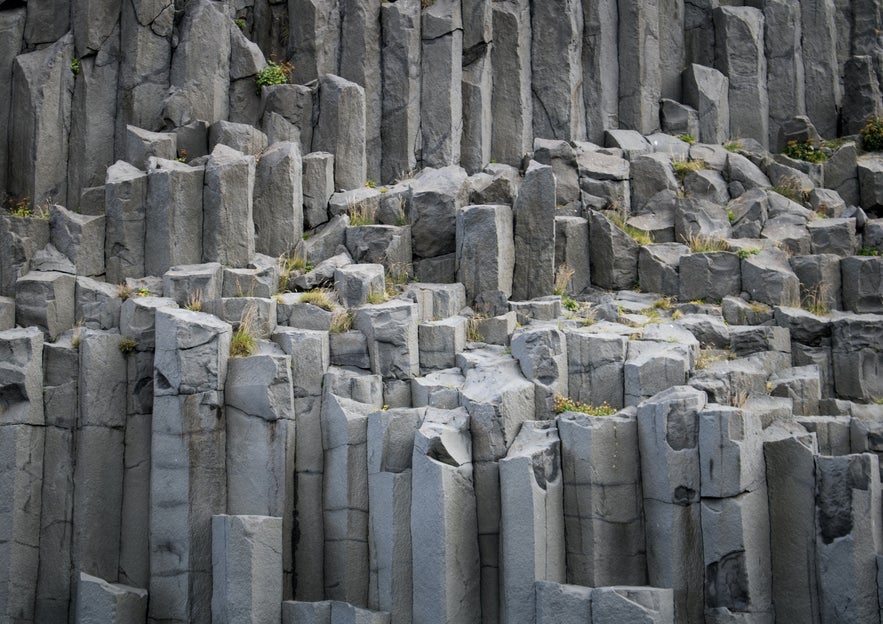
While the rigid shape of basalt columns might seem man-made, they are actually natural rock formations created by the cooling and solidification of basalt lava, the molten rock expelled by a volcano during an eruption that is specifically composed of basalt rock. Basalt is a common type of volcanic rock that is rich in iron and magnesium and low in silica content. It's characterized by its dark color, typically grey to black, and fine-grained texture.
- See also: Iceland's Volcanoes: The Complete Guide
Iceland's geological activity is primarily characterized by basaltic eruptions. The country sits atop the Mid-Atlantic Ridge, where the Eurasian and North American tectonic plates are diverging. This setting provides a constant source of magma from the Earth's mantle, much of which is basaltic in composition.
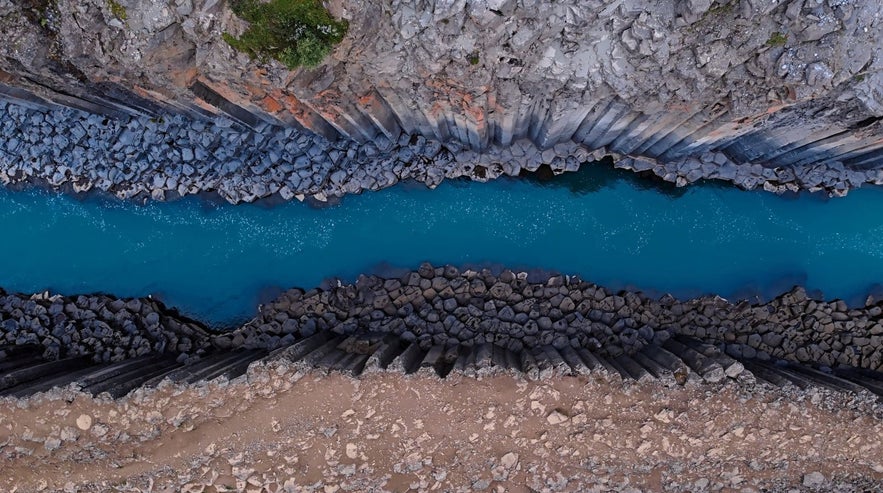
Basalt columns often appear as long, vertical, and sometimes hexagonal pillars that can range from a few feet to several meters in height. These columns can be found clustered together, creating an imposing and geometrically intricate landscape.
The hexagonal shape of basalt columns is the result of a natural geometrical response to the stress of contraction. As lava contracts, it tries to form shapes that reduce stress, and hexagons are the most efficient way to achieve this while maintaining a consistent shape and minimizing surface area.
With Iceland's basaltic landscape, it is no surprise that you will find a lot of these columns here. They can also be found in other parts of the world, such as by the Giant's Causeway in Northern Ireland, the Devil's Postpile in California, Fingal's Cave in Scotland, and Gilbert Hill in India.
Basalt Columns in Iceland
So, once you've seen one basalt column, you've seen them all, right? Not quite! Basalt columns can be found all over Iceland, and their manifestations are very diverse. Whether the basalt columns are complimenting a mighty adjacent waterfall or adorn the cliffs of a stunning canyon, no two formations are the same. Here are some of our favorite locations where you can find basalt columns in Iceland.
Reynisfjara Black Sand Beach
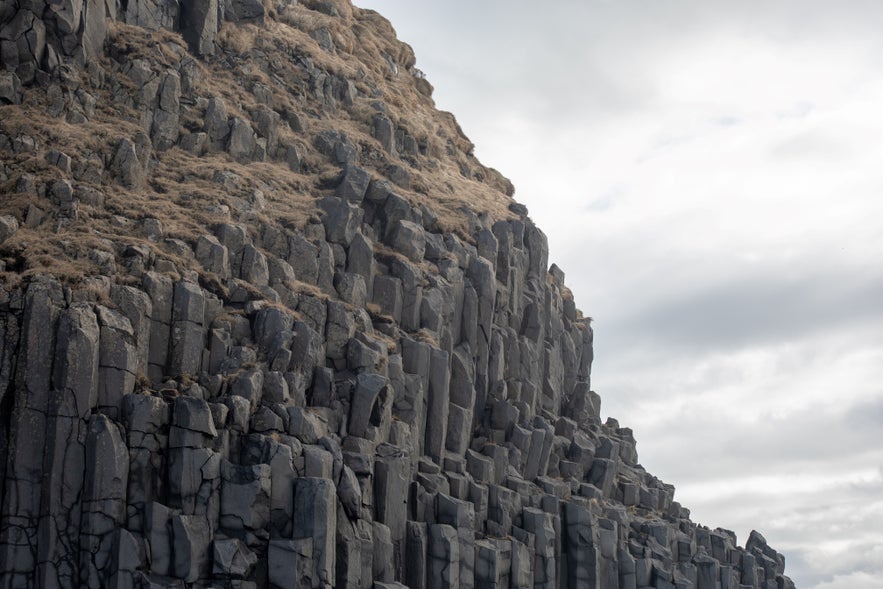
The black sand beach of Reynisfjara is one of Iceland's most iconic attractions. Located on the South Coast near the village of Vik, it is notable for its striking basalt columns, which are a prominent feature of the area's landscape.
- See also: 8 Amazing Black Sand Beaches in Iceland
At Reynisfjara, these basalt formations rise majestically alongside the beach, showcasing a powerful interaction between elemental forces. The dramatic contrast of the dark stone pillars against the backdrop of rolling waves and black sand is a sight to behold.
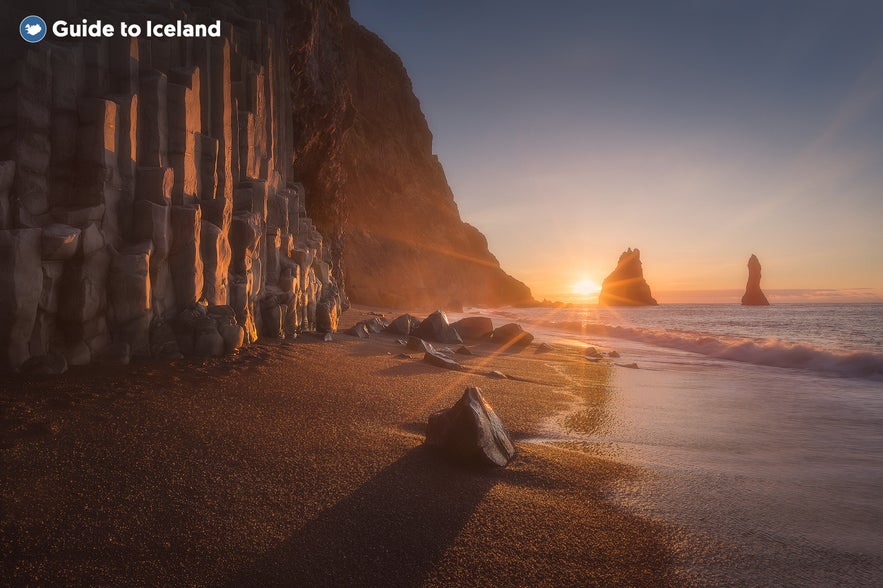
Atop the cliffs themselves, visitors may also spot one of Iceland's cutest residents, which makes its home there - the puffin. While visiting the beach is a spectacle, visitors are advised to exercise caution due to potentially dangerous wave conditions and respect the natural environment. Reynisfjara is the jewel of many South Coast tours, such as this South Coast minibus tour with a glacier hike.
Other than Reynisfjara, there are many amazing locations in the vicinity just begging to be explored. If you're interested in checking out the DC3 Plane Wreck or the Jokulsarlon Glacier Lagoon, you might want to consider booking a hotel in Vik, which is conveniently located right by the famous beach.
Studlagil Canyon
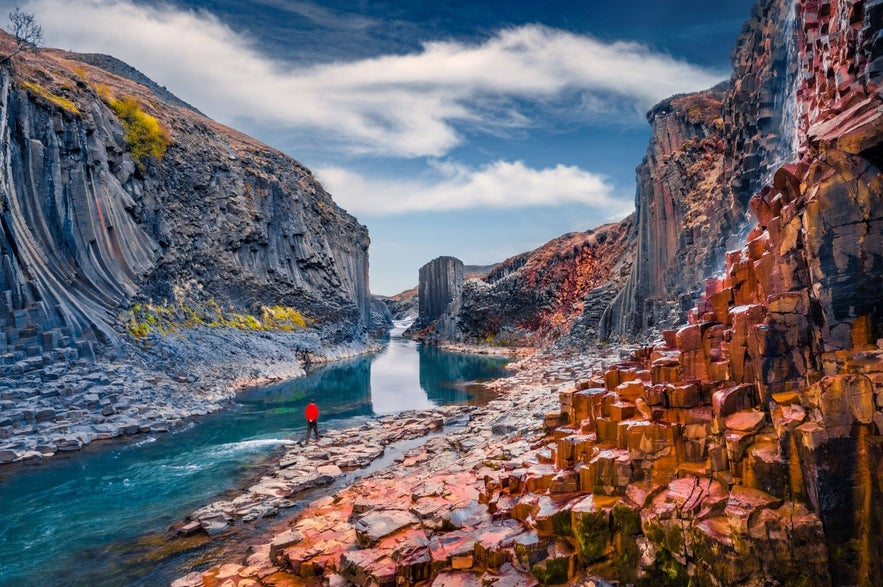
Studlagil is one of Iceland's hidden gems, a canyon defined by its abundance of basalt columns sculpted by the relentless forces of nature. The walls of the canyon are adorned by these imposing rock formations whose dark color contrasts with the vivid blue waters flowing through Studlagil.
The mystical and everchanging colors of the river are a result of glacial meltwater from nearby glaciers. As the water runs through the canyon, it carries fine sediment and minerals, which gives the river this mesmerizing quality.
- See also: Top 11 Amazing Canyons in Iceland

Studlagil is an astonishing showcase of Iceland's natural forces, owing its existence to an interplay of volcanic activity and erosion. Seeing the canyon for yourself will fill you with a newfound respect for nature and the stunning artwork it leaves behind.
The canyon is located in the eastern part of the country, which makes Studlagil a less visited natural wonder than some of Iceland's other attractions. Booking accommodation in East Iceland is, therefore, a good option for visitors who wish to do their exploration of Iceland away from the crowds.
Svartifoss Waterfall
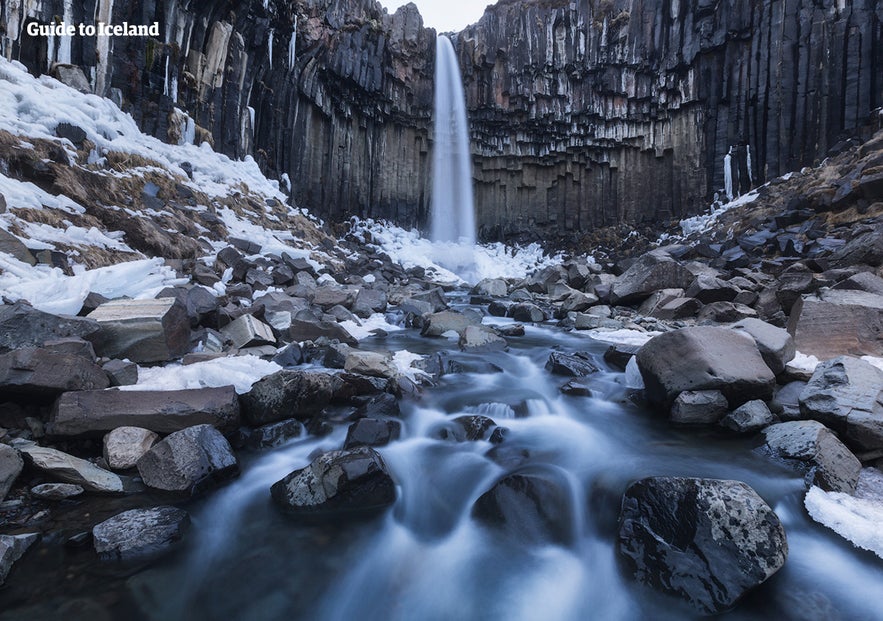
Svartifoss waterfall is one of Iceland's most renowned natural attractions, located in Skaftafell Nature Reserve in Vatnajokull National Park. This waterfall is particularly famous for its dramatic backdrop of dark basalt columns that inspired its name, which translates to "Black Falls."
Approaching Svartifoss waterfall is similar to entering a cathedral, with the hexagonal columns encircling the falls reminiscent of an organ's pipes. The contrasting visuals of the black columns against the cascading white waters create a mesmerizing natural spectacle.

Svartifoss waterfall is accessible via a moderate hike, which is in itself rewarding, as it offers visitors an opportunity to immerse themselves in the beautiful surroundings at Skaftafell, which include rich flora, glacial ice, and a rugged landscape.
Another activity to do in the area is to go on a glacier walk in Skaftafell on Vatnajokull glacier. There, local expert guides will tell you everything you need to know about the area and lead you to dazzling viewpoints atop the glacier.
Kirkjugolfid Stones
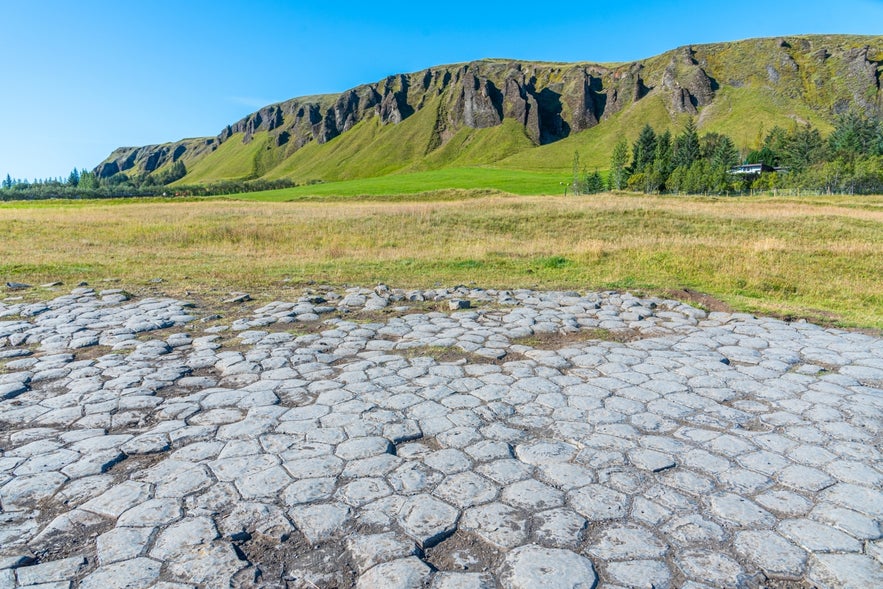
Kirkjugolfid, or the "Church Floor," is a natural wonder located in South Iceland, near the town of Kirkjubaejarklaustur. It's a well-preserved natural basalt column pavement, which resembles a man-made floor, thus inspiring its name.
Despite looking like remnants of an ancient settlement, the formation is not man-made but rather an expanse of basalt stone slabs that slowly eroded when the sea covered the area. There has, in fact, never been a settlement in the area.

Image from Wikimedia, Creative Commons, by Bultro.
Kirkjugolfid is surrounded by grassy fields, giving it a distinct appearance in the landscape. The fascinating geometric patterns are a good example of natural artwork where visitors can witness firsthand the intriguing ways that geological processes can mimic man-made structures.
If you're traveling on the South Coast, staying at an accommodation in Kirkjubaejarklaustur is a good choice if you want to see this fascinating rock formation. An added benefit to staying there is the proximity to one of Iceland's premier natural attractions, the unbelievable canyon of Fjadrargljufur.
Dverghamrar Cliffs
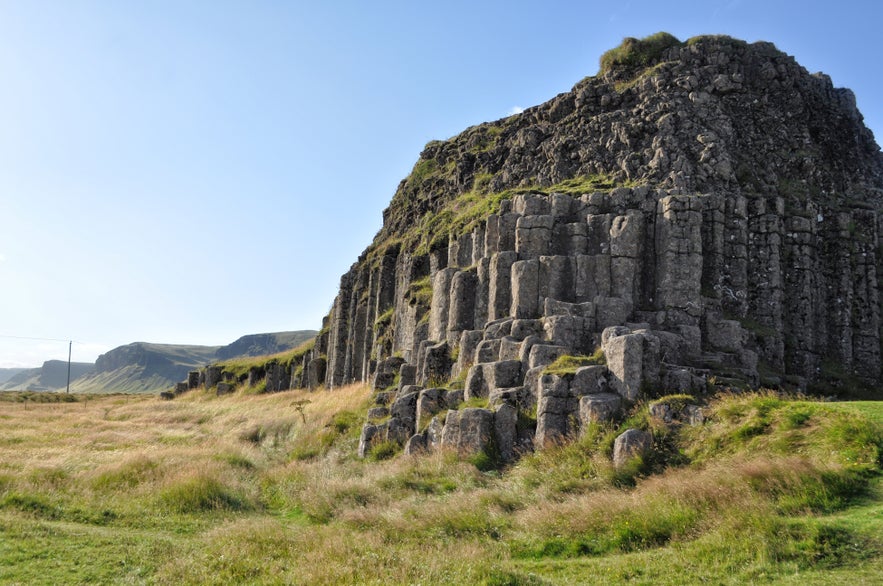 Located near Kirkjugolfid is Dverghamrar, often referred to as "Dwarf Cliffs," a basalt column formation located in southern Iceland. The cliffs form a small canyon and are a nice spot to visit to take photos and to take in the surroundings.
Located near Kirkjugolfid is Dverghamrar, often referred to as "Dwarf Cliffs," a basalt column formation located in southern Iceland. The cliffs form a small canyon and are a nice spot to visit to take photos and to take in the surroundings.
- See also: The Dwarfs in Dverghamrar Cliffs
The cliffs are surrounded by Icelandic folklore, with local legends suggesting that dwarves and elves inhabit the area, adding a layer of cultural intrigue to the site. There are several stories from people claiming to have heard singing or music coming from the rocks, but unfortunately, the dwarves have not put up a schedule for their venue.

Photo from Flickr, Creative Commons, by Jennifer Boyer. No edits made.
Dverghamrar is less visited than many of the other attractions on this list, making it a nice and quiet stop on your travels where you can park your car, take a stroll around the area, and possibly spot a mythological creature or two.
If you're interested in learning more about the folklore and mythology in Iceland, take a look at our guide to Icelandic folklore. There are endless stories in Iceland surrounding just about every landmark, which might give you a newfound appreciation of some of the natural attractions.
Aldeyjarfoss Waterfall

The majestic waterfall of Aldeyjarfoss, located in the north of Iceland, is a less visited but remarkable natural pearl. Nestled in the Highlands, Aldeyjarfoss waterfall is particularly notable for the contrast between the elegant cascade of water and the surrounding dark basalt columns.
The powerful flow of water, flanked by basalt column walls of gothic beauty, cascades down into a pool of freezing cold water, highlighting the stark, natural beauty of the area. The basalt columns in the area take on many colors, ranging from black to hues of yellow and orange.
- See also: Aldeyjarfoss Waterfall in North Iceland
The isolated location of Aldeyjarfoss contributes to its untouched beauty. It's less frequented by visitors compared to other natural sites in Iceland, making it a serene location for those interested in observing the raw and unaltered magnificence of nature's geological artwork.
A short proximity to Aldeyjarfoss is just one of many benefits of booking a hotel in North Iceland.
Litlanesfoss Waterfall
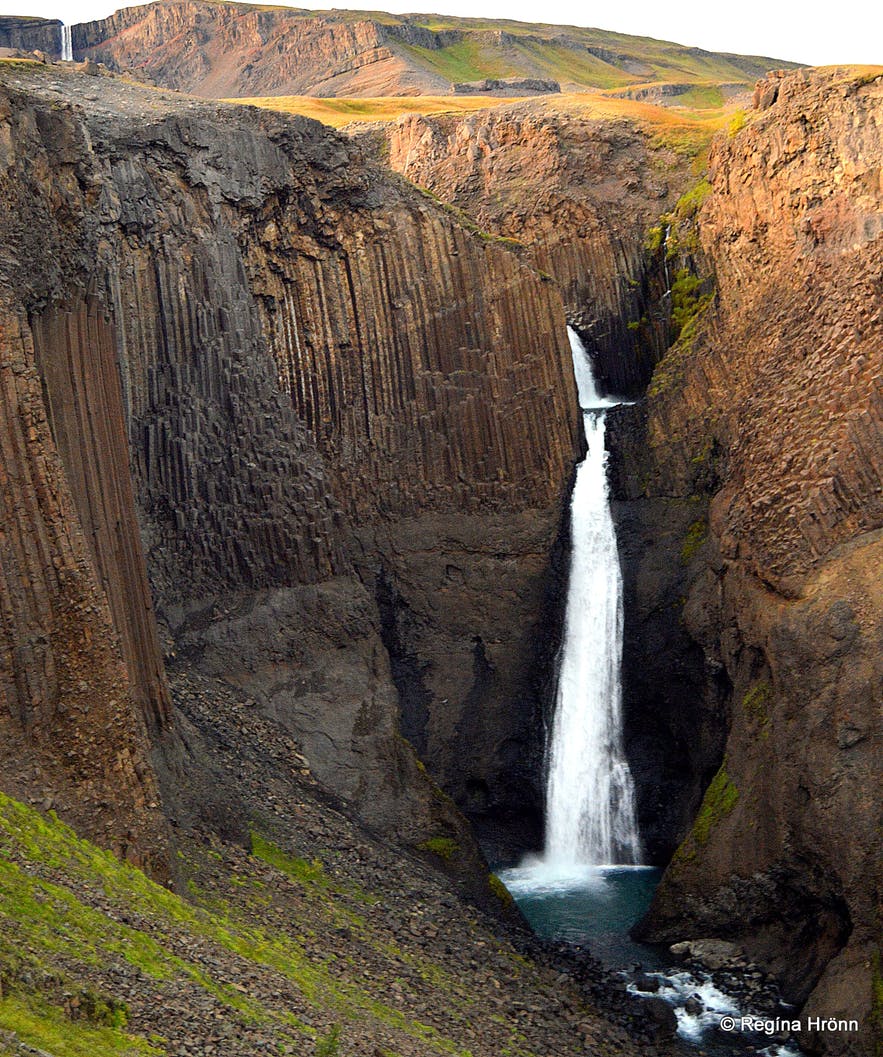
Litlanesfoss is another waterfall surrounded by impressive basalt columns. Situated in East Iceland, Litlanesfoss is encased by towering cliffs that provide it with a distinctive and elegant aesthetic. It's positioned along the Hengifossa River, with the water originating from the surrounding moorland and cascading elegantly down the rugged basaltic terrain.
The waterfall is nestled amidst a landscape characterized by lush vegetation, in stark contrast with the dark basaltic formations, offering a rich tapestry of natural elements. There are many other natural pearls nearby, such as the breathtaking waterfall of Hengifoss, which can be seen in the background of the picture above.
Litlanesfoss is a lesser-visited destination, offering a somewhat secluded and intimate experience for visitors. The scenery is a feast for the eyes, with the towering basalt columns ranking amongst the tallest in the country.
This area is located close to the town of Egilsstadir, the unofficial capital of East Iceland, and other natural pearls, such as the forest of Hallormsstadaskogur and the mysterious lake Lagarfljot. With so much to explore in the region, booking accommodation in Egilsstadir can be a good idea.
Gerduberg
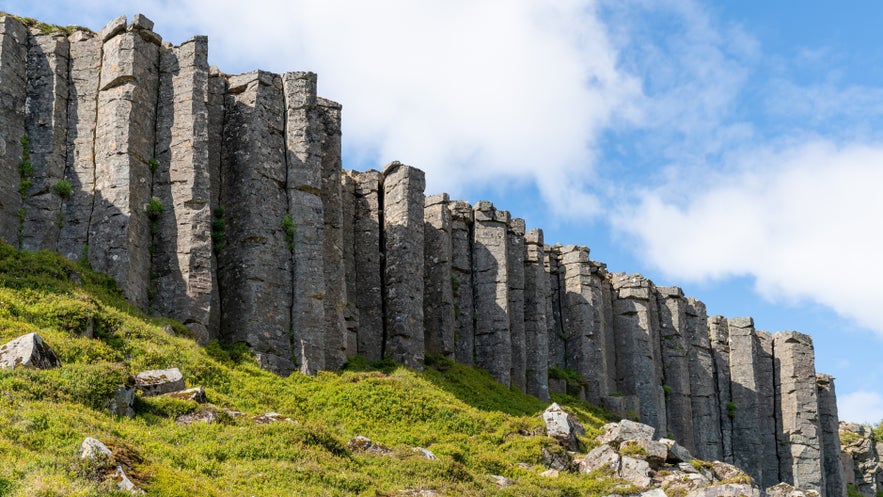 Gerduberg is a series of symmetrical basalt columns located on the Snaefellsnes Peninsula. These pillars are tall, ranging up to 46 feet tall (14 meters), forming a massive wall-like structure, which makes Gerduberg stand out like a natural fortress.
Gerduberg is a series of symmetrical basalt columns located on the Snaefellsnes Peninsula. These pillars are tall, ranging up to 46 feet tall (14 meters), forming a massive wall-like structure, which makes Gerduberg stand out like a natural fortress.
The columns spread out for a decent distance with an old path running alongside them. As Gerduberg is one of the first things you'll see when visiting Snaefellsnes from Reykjavik, it makes for a great photo stop and a place to go for a walk.
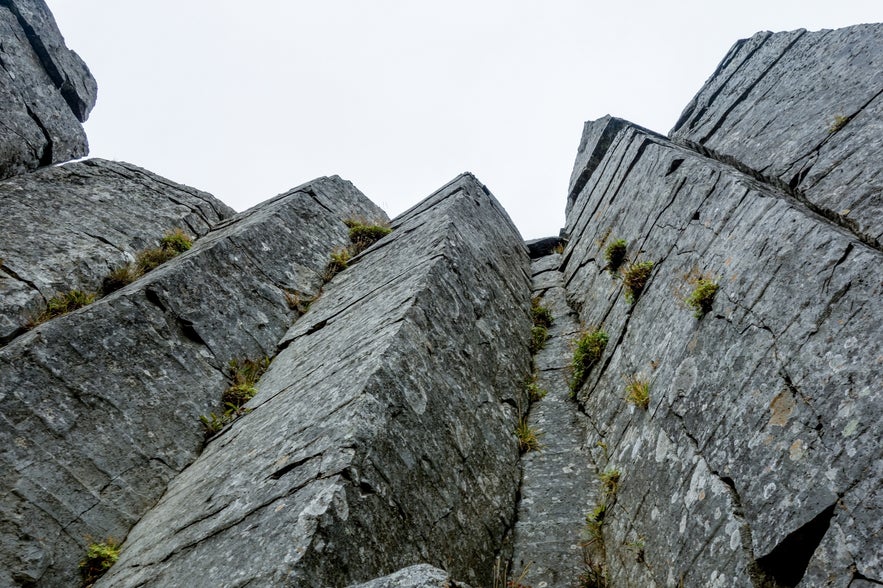
There is plenty to do in Snaefellsnes, which is sometimes called a miniature version of Iceland, owing to the diverse landscapes found in the region. Here, you can find a glacier, black sand beaches, cascading waterfalls, towering cliffs, and rich birdlife.
Visiting the region on one of many Snaefellsnes tours is a good way of getting local insight from an expert guide, but booking a hotel or guesthouse in Snaefellsnes is also a good way to give yourself the time needed to take in the serene and beautiful scenery.
Icelandic Architecture Inspired By Basalt Columns
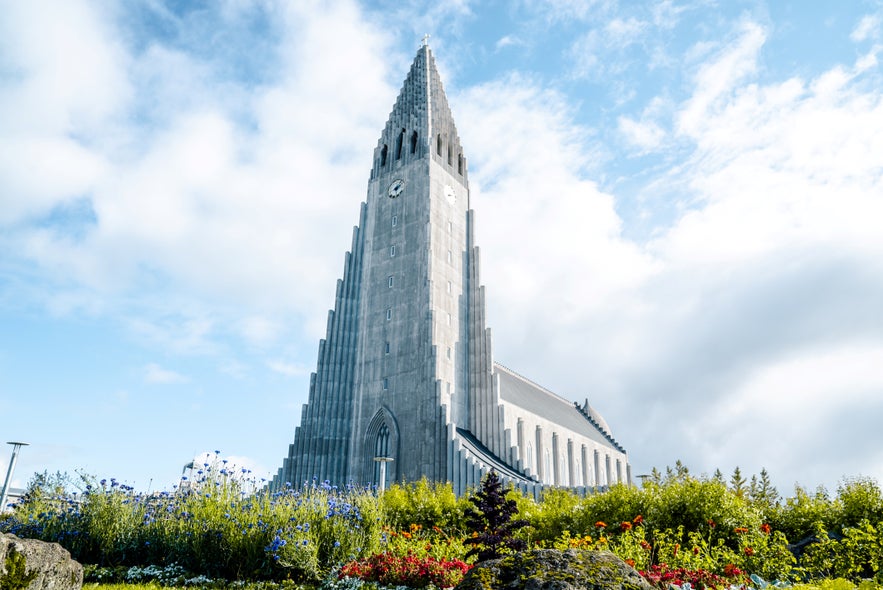 Buildings and structures in Iceland often incorporate design elements that echo the hexagonal shapes and symmetrical patterns of basalt columns. One of Iceland's most prominent architects, Gudjon Samuelsson, was renowned for integrating elements of the country's natural landscapes into his architectural designs.
Buildings and structures in Iceland often incorporate design elements that echo the hexagonal shapes and symmetrical patterns of basalt columns. One of Iceland's most prominent architects, Gudjon Samuelsson, was renowned for integrating elements of the country's natural landscapes into his architectural designs.
One of the most iconic examples of his work is the Hallgrimskirkja church in Reykjavik, a structure notably inspired by the basalt columns. The church's iconic facade is characterized by tall, column-like structures that mimic the hexagonal shapes.
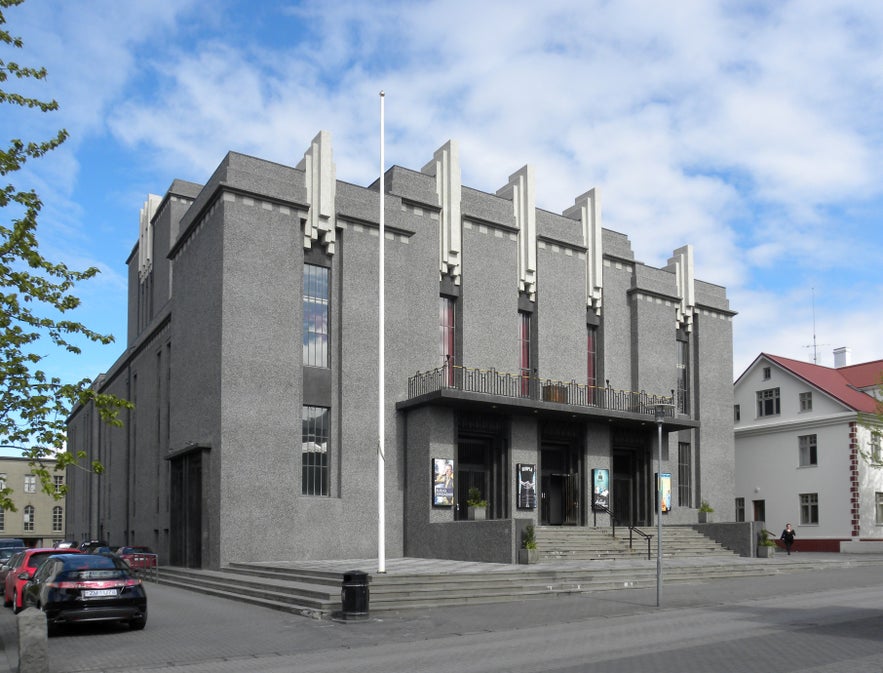
Image from Wikimedia, Creative Commons, by Jason Paris.
Samuelsson's approach was not limited to Hallgrimskirkja alone. He is renowned for incorporating elements inspired by the country's mountains, glaciers, and lava fields into various architectural projects.
Another example of basalt columns as inspiration in Samuelsson's work is in Iceland's National Theater, located in central Reykjavik. The building, which was built between the years 1928 and 1950, is adorned with shapes that mimic the basalt columns, giving the theater an imposing, neo-gothic atmosphere.

One notable example, beyond the works of Samuelsson, is the Harpa Concert Hall in Reykjavik. The glass facade of Harpa, designed by artist Olafur Eliasson, is reminiscent of basalt columns, with geometric shapes that reflect the light and surrounding landscapes, creating a dynamic interplay between the structure and its environment.
If you want to know more about some of the interesting buildings in Iceland, consider taking one of the many Reykjavik walking tours available, where you can get a deeper insight into Icelandic culture and architecture.
Map of Basalt Columns in Iceland
If you want to find the aforementioned basalt column locations, here's a handy map to help you navigate between them.
That's all we have on basalt columns in Iceland. Did we miss any of your favorite basalt column locations? Which one would you most like to visit? Let us know in the comments below!
Weitere interessante Artikel

Ausbrüche des Sundhnukagigar-Vulkans 2024 | Der komplette Guide
Erfahre alles über die Vulkanausbrüche 2024 am Sundhnukagigar in Island. Was bedeuten sie für die Menschen in Grindavik? Wie stark sind die Ausbrüche im Vergleich zu anderen Ausbrüchen der letzten Zei...Weiterlesen
Island im Herbst – Der ultimative Reiseführer
Der Herbst in Island ist eine magische Zeit, in der sich die Natur in die verschiedensten Farben hüllt. Diese Saison ist daher ideal, um das Land zu erkunden. Entdecke unglaubliche Landschaften, beoba...Weiterlesen
Island im Sommer – Der ultimative Reiseführer
Der Sommer ist eine großartige Zeit, um Island und seine Wunder ohne Einschränkungen zu entdecken. Nutze das längere Tageslicht, um die wunderschönen Landschaften des isländischen Hochlands zu erkunde...Weiterlesen

Lade Islands größten Reisemarktplatz auf dein Handy herunter, um deine gesamte Reise an einem Ort zu verwalten
Scanne diesen QR-Code mit der Kamera deines Handys und klicke auf den angezeigten Link, um Islands größten Reisemarktplatz in deine Tasche zu laden. Füge deine Telefonnummer oder E-Mail-Adresse hinzu, um eine SMS oder E-Mail mit dem Download-Link zu erhalten.
